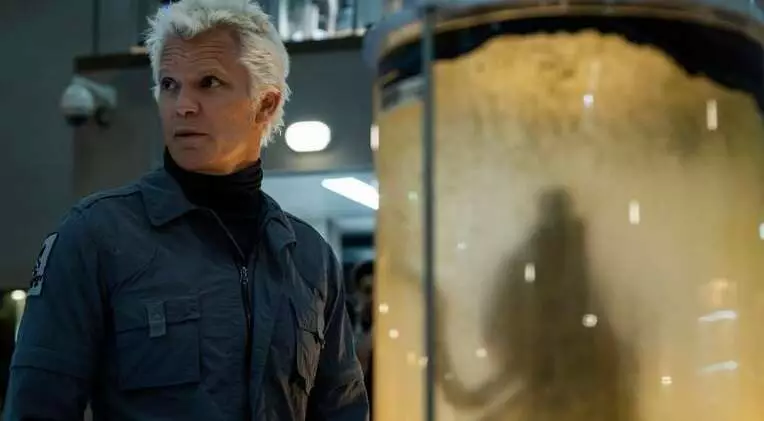The Alien franchise stands as a formidable titan in science fiction horror, celebrated for its visceral scares and groundbreaking visuals. However, amid its storied history, each installment has sparked a fierce debate: which film truly captures the essence of terror? The upcoming FX series, “Alien: Earth,” ambitiously aims to intertwine the franchise’s rich past with a refreshed narrative lens — but the real challenge lies in balancing reverence with innovation. The showrunner Noah Hawley’s comments reveal a strategic nostalgia tempered with a desire to push boundaries. By choosing to draw inspiration primarily from the original “Alien” and “Aliens,” Hawley seems to recognize the power of immersive retro-futurism, rejecting the overly advanced aesthetic of the recent prequels like “Prometheus.” This decision is an acknowledgment of the fundamental importance of atmosphere and design—a deliberate move to tap into the primal fears elicited by Ridley Scott’s original vision.
Yet, Hawley’s intent extends beyond mere homage. His desire to “re-mystify” the Xenomorph reflects an insightful understanding: the creature, as an icon of horror, risks becoming exhausted if its origins and lifecycle become too predictable. This approach suggests an earnest effort to reintroduce the element of surprise, to keep audiences on the edge of their seats by continually evolving the narrative universe while respecting its roots. The franchise’s history reveals that every new chapter, regardless of reception, has contributed a piece to an intricate puzzle: a narrative mosaic that oscillates between raw horror and philosophical pondering about creation and monstrosity.
The Challenge of Consistency in a Fractured Timeline
One of the franchise’s most contentious points has been the inconsistent tone and aesthetic across installments. From the gritty retro-futurism of the original “Alien” to the more visually advanced “Prometheus” and “Covenant,” each film bears the marks of different directorial visions and technological eras. Hawley’s focus on the first two films underscores a desire for aesthetic coherence, leaning into nostalgia to create a unified visual language that amplifies the series’ psychological impact. By doing so, the new series can tap into the atmospheric tension that made the initial movies so terrifying—claustrophobic sets, antiquated technology, and the sense of a universe unknowably vast and indifferent.
However, one must question whether reliance on nostalgia might restrict the franchise’s evolution. Is there a risk in being overly anchored to the aesthetic of “Alien” and “Aliens,” potentially sacrificing opportunities for fresh storytelling? While Hawley’s choice might initially seem safe, it also signals a deliberate attempt to refine the franchise’s visual storytelling, ensuring that the horror remains visceral and grounded in an unsettling reality—qualities that are often lost in sweeping visual spectacle.
Reinvigorating the Myth: The Limitless Horror of the Xenomorph
Hawley’s commitment to “re-mystify” the Xenomorph aligns with a broader understanding of the creature’s core appeal: its unknowable nature. Over the years, fans have dissected every aspect of the lifecycle, attempting to map out every detail of its biology. Yet, Hawley recognizes that deviation from familiarity is essential to maintain suspense. With each revelation about the creature’s biology, the potential for surprise diminishes. The franchise risks becoming a series of predictable spectacle unless it finds new ways to challenge the audience’s expectation.
He hints at an approach aimed at refreshing the creature’s mythos—perhaps by exploring its origins or ecological role in ways that defy established lore. This will be vital in avoiding stagnation, ensuring that “Alien” remains relevant in a crowded genre. The balance between returning to known horror archetypes and innovating within is delicate, yet Hawley’s perspective suggests a strategic intent to preserve the franchise’s edge—reinvigorating its mystique rather than diluting it with predictable sequels or overly-explained origins.
Impact of External Factors: The Shadow of COVID-19 and Industry Shifts
The recent global pandemic has inevitably played a role in shaping the trajectory of “Alien: Earth.” Delays, production adjustments, and shifts in audience engagement have all influenced how the series is being crafted and received. These external challenges provide a paradoxical benefit: they force creators like Hawley to refine their vision, stripping away excess and focusing on core storytelling elements. But they also introduce uncertainty—will viewers embrace a retro-styled horror series in an era dominated by high-tech spectacle? The answer lies in the franchise’s ability to harness nostalgia while delivering contemporary psychological horror.
In this context, Hawley’s emphasis on focusing on the first two films is not just an aesthetic choice; it’s a strategic reaction to a changing audience landscape. Simpler, more atmospheric horror might cut through the noise of digital overload, resonating deeply with fans longing for suspense and dread rooted in tangible, familiar visual cues. The pandemic’s disruption might ultimately serve as a catalyst for a more focused, genuine storytelling approach—one that places substance over spectacle.
Ultimately, Hawley’s statements reflect a confident yet cautious approach—acknowledging the franchise’s storied past while consciously steering it toward a future that respects its legacy, yet boldly seeks to redefine what horror in the “Alien” universe can be. Whether “Alien: Earth” will succeed in this endeavor remains to be seen, but the determination to innovate without losing sight of what made the original films terrifying is unmistakably promising.

